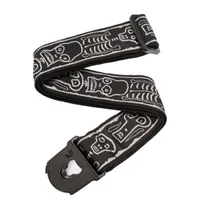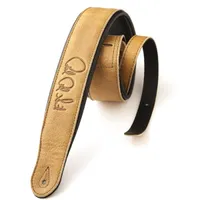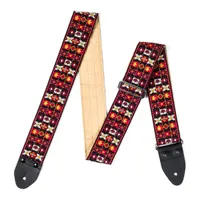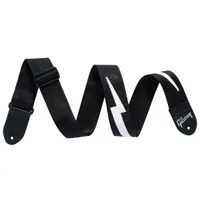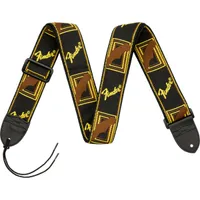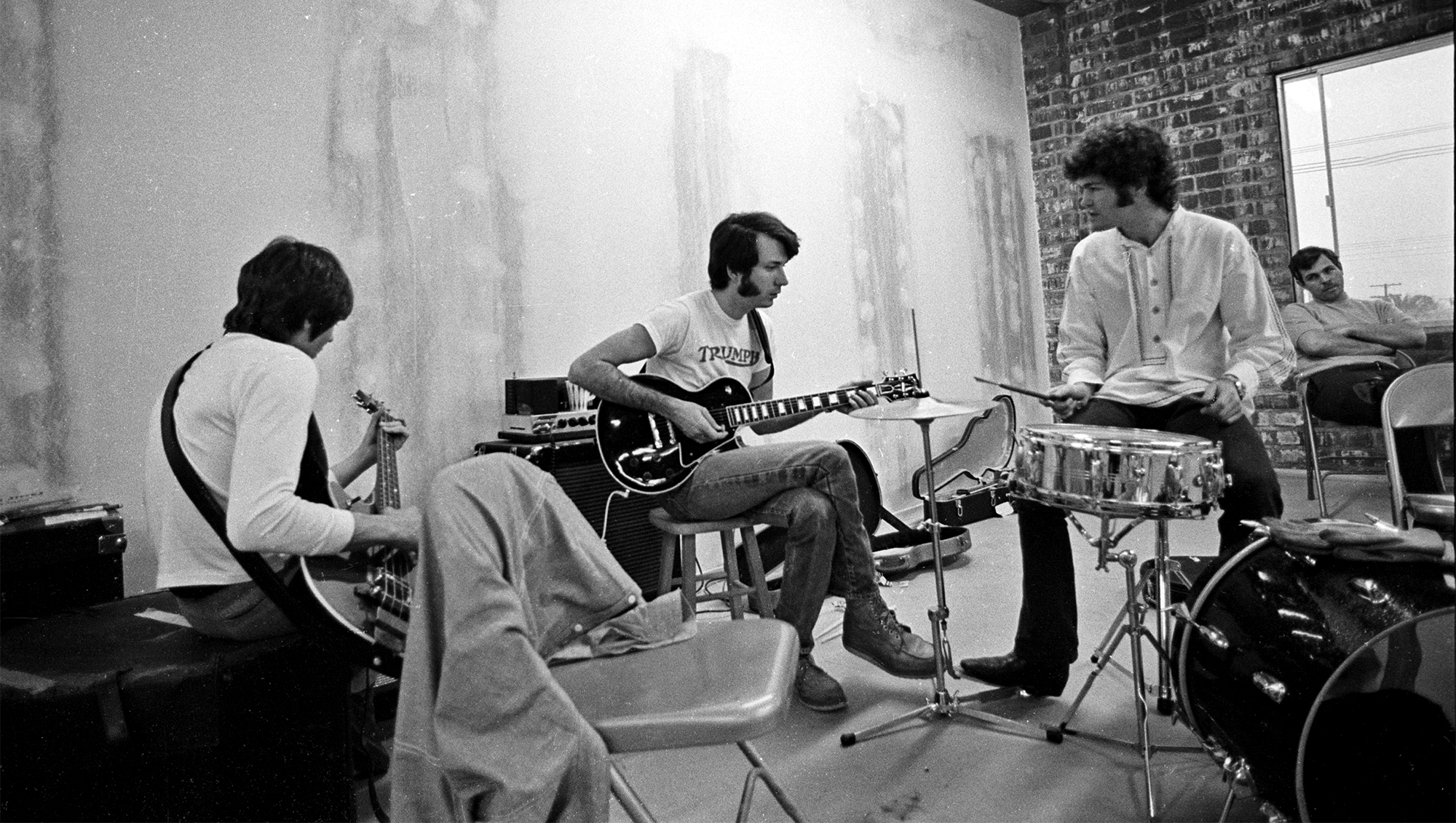Best guitar straps 2025: Keep your guitar safe and play in comfort
I've cut through the noise to pick out the guitar straps that are really worth your money
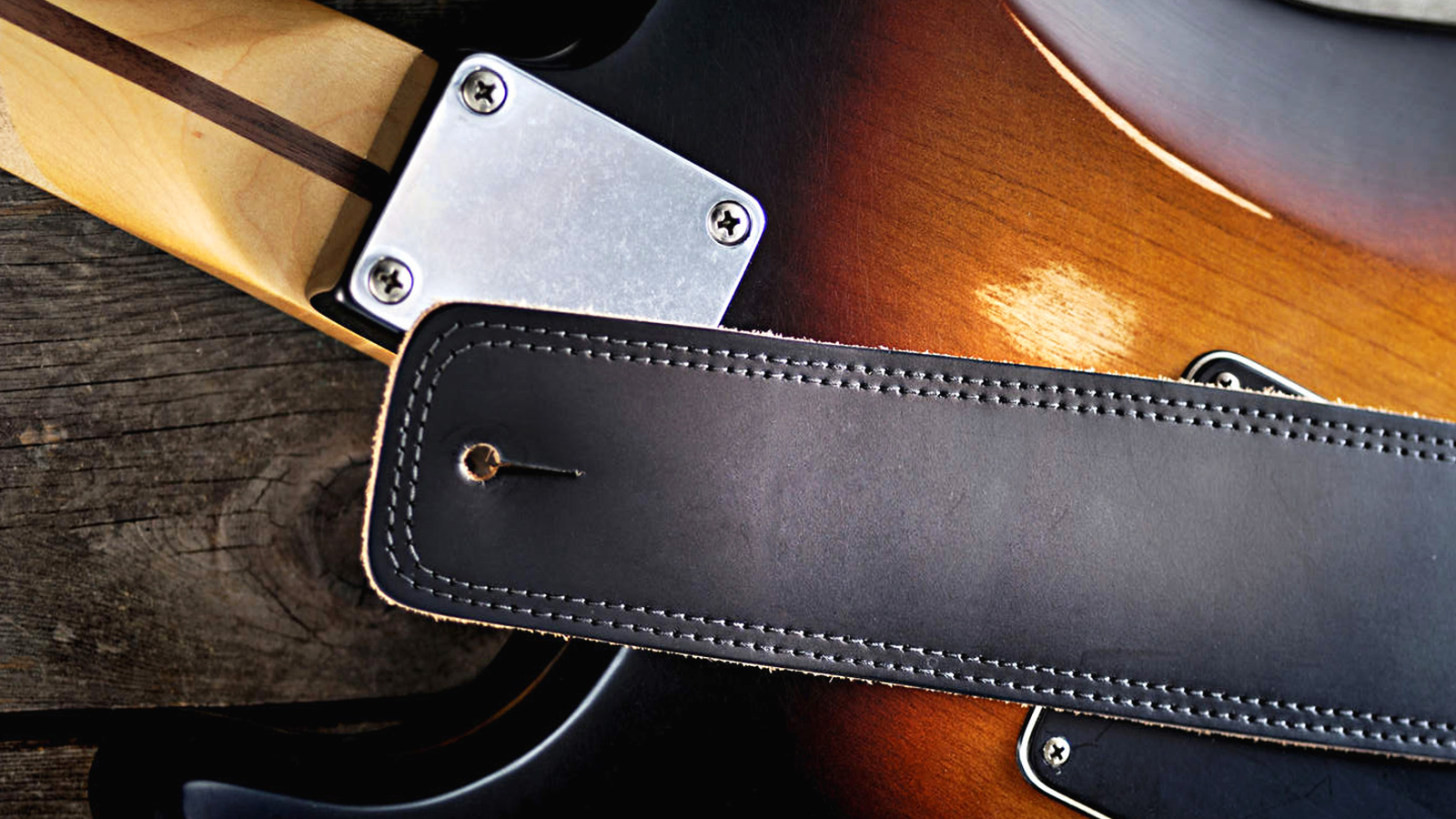
Buying a guitar strap is as personal a choice as buying a guitar itself. What works for one player might feel uncomfortable for another, and it's a similar tale in that the best guitar strap for a Strat might be completely different than one for a Les Paul.
Lucky for you, I've been playing guitar for over 20 years now, and I've amassed a huge collection of instruments, most of which have their own straps. For me, it's the width of the strap that defines its comfort level rather than the material. If I'm playing long sets, then I'll go for a wide, leather strap, reserving those cheaper polypropylene straps for use in the studio, where I might be switching between guitars more quickly.
If you want the best all-rounder for most players, then you should have a look at the Fender Ball Glove Leather Strap. It's got a nice width, looks cool, and it's excellent value for money too. For a cheaper option, you can't go wrong with the Ernie Ball Polypro Strap. It's not as comfortable as wider straps, but there's an excellent array of colors to choose from.
If you're buying your first guitar strap or you want some tips, check out my how to choose section, which features loads of great advice. I've also curated an FAQs section which answers the most common questions guitarists have asked me about straps, as well as glossary of key terms if you're unsure of any of the lingo used in this guide.
My top picks

The Fender Ball Glove Leather Strap takes the top spot for me, thanks to its super durable build quality and its classy, understated look. It’s wide and so feels super comfortable, even with a bass guitar or heavier Les Paul-style guitar.
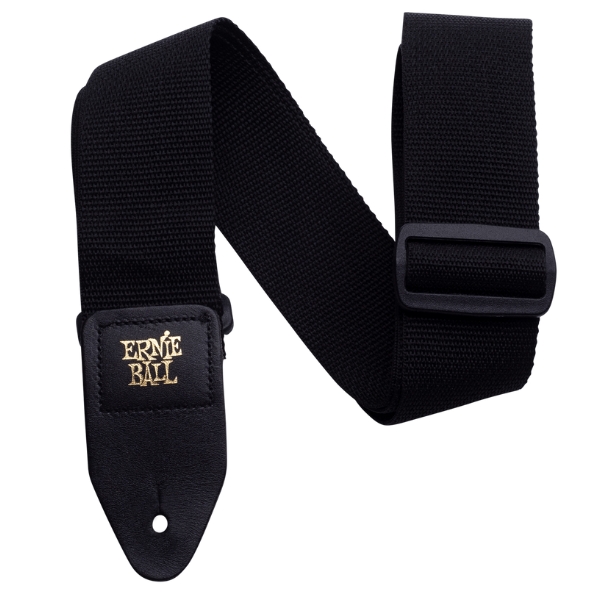
If you’re on a budget, you can’t go wrong with the Ernie Ball Polypro range of guitar straps. Coming in a huge array of colors, these simple yet durable straps have a unique construction that ensures the color doesn’t bleed and that the strap doesn’t stretch.
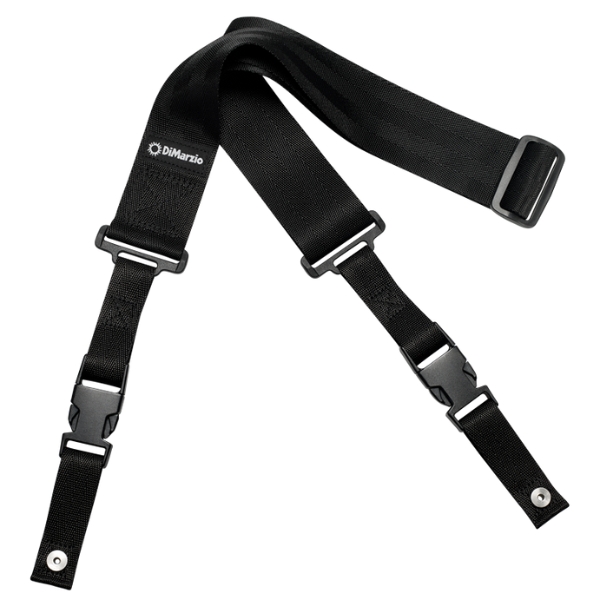
If you're looking to ensure your guitar stays on its strap, it doesn't come much more secure than the DiMarzio ClipLock strap. With its proprietary locking system, once you get into the ecosystem you can use the same strap on multiple guitars.
Best overall
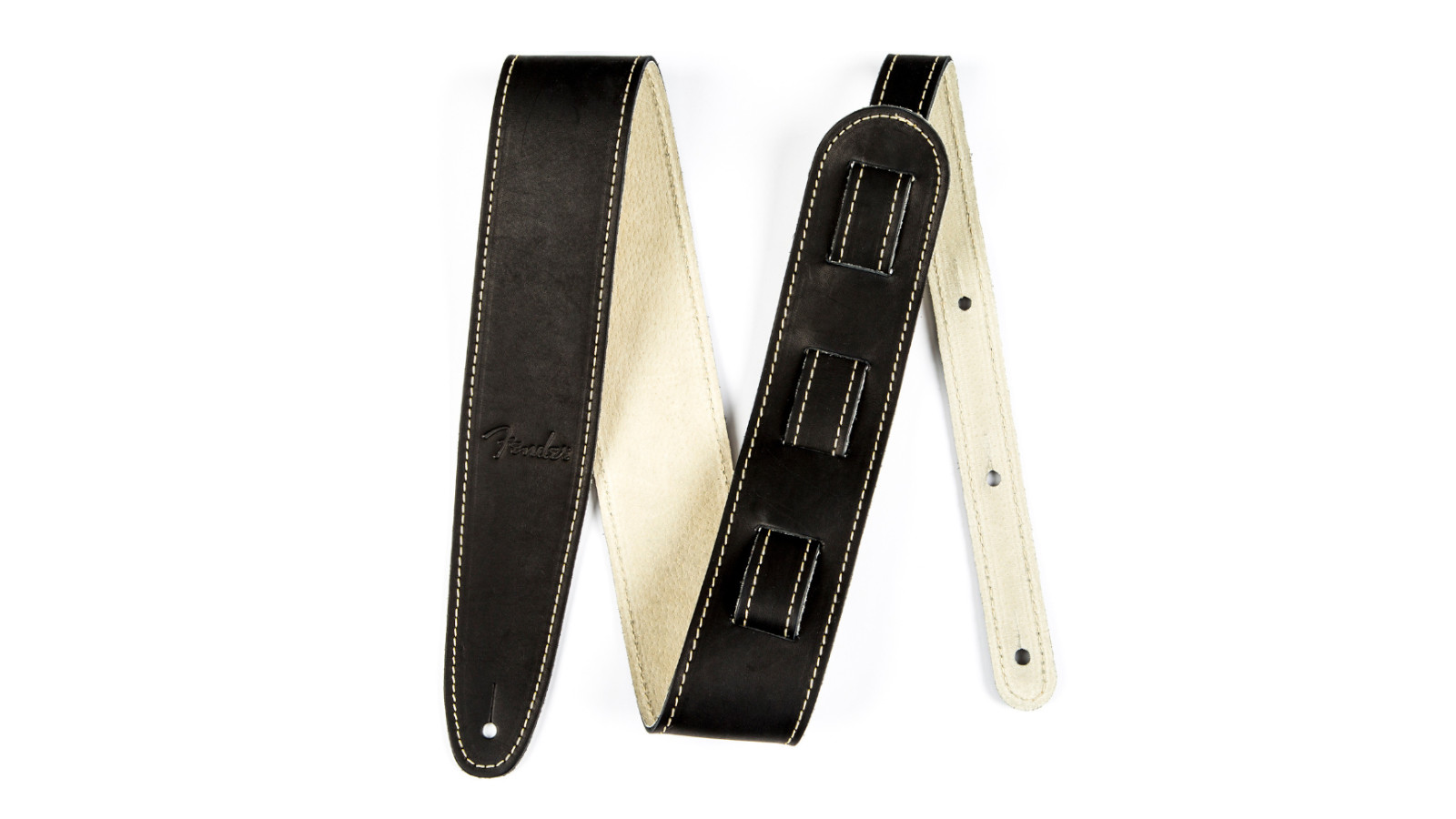
1. Fender Ball Glove Leather Strap
Our expert review:
Specifications
Reasons to buy
Reasons to avoid
✅ Buy if you want the best all-around guitar strap: With its comfortable width, high-quality leather and suede build, plus its reasonable price point, this Fender Ball Glove strap is my top pick.
❌ Avoid if you're not a Fender fan: Some guitarists might feel weird about putting a Fender strap on a non-Fender guitar, which is understandable.
The Fender Ball Glove Leather Strap is made from the same type of leather as baseball gloves, hence the name. It’s not just a marketing spiel though, there’s a reason this guitar strap is made from the same materials pro baseball players use.
The leather used in the Fender Ball Glove Strap is not only incredibly tough but it’s also lightweight. This means it will put up with plenty of abuse on the road, whilst simultaneously not adding to the overall weight of your instrument.
It looks great too, with a subtle appearance that’s classy without taking the shine away from your instrument. The contrast stitching helps it stand out from your typical black guitar strap, and the suede underside feels nice and soft, serving the dual purpose of comfort whilst preventing the strap from sliding over your clothing.
Best budget
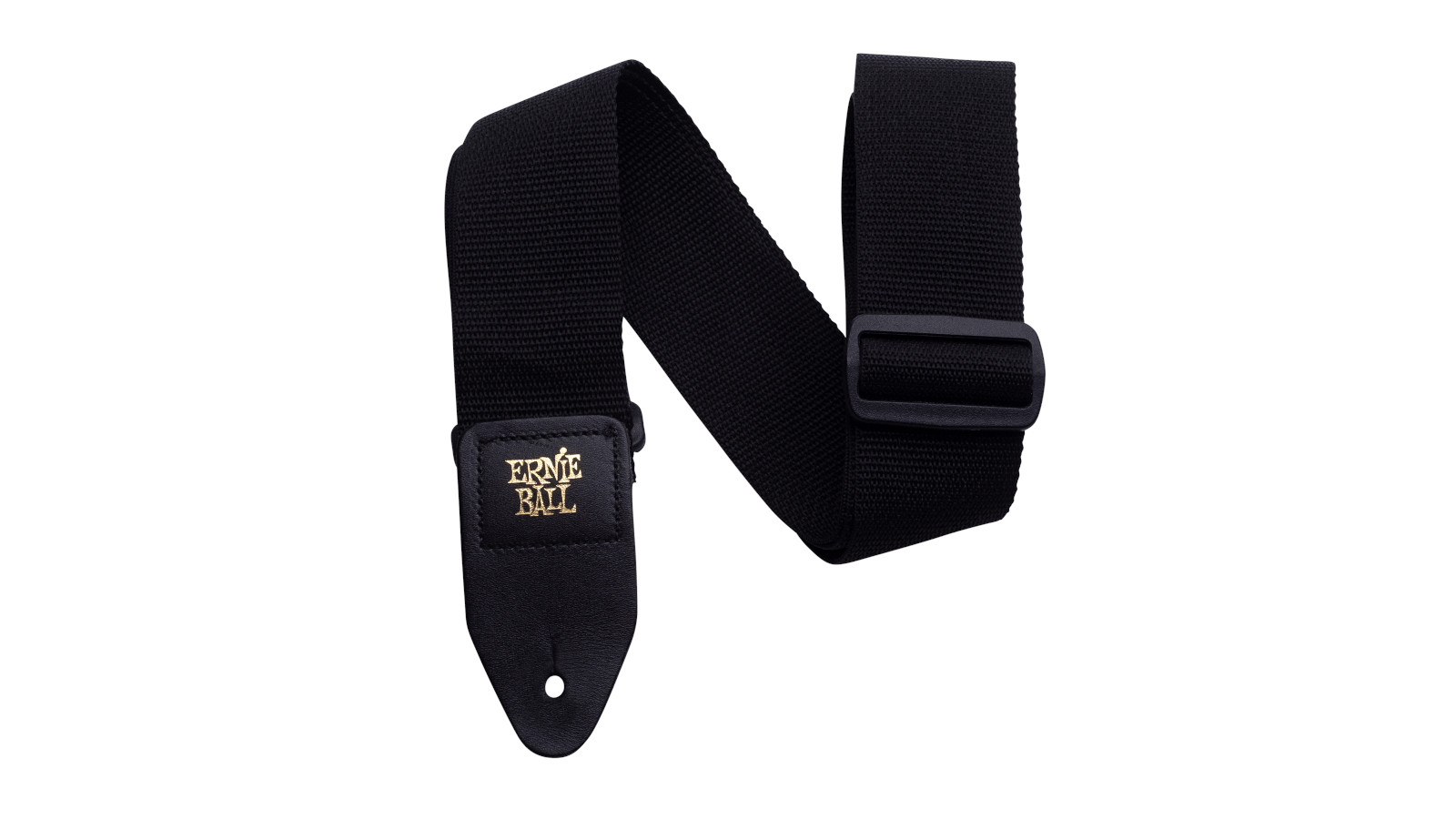
2. Ernie Ball Polypro Strap
Our expert review:
Specifications
Reasons to buy
Reasons to avoid
✅ Buy if you want a budget guitar strap: Costing less than $10, this strap is an insanely good value for money, and you could outfit your entire collection with these for the price of some leather straps.
❌ Avoid if you've got a heavy guitar: The width is quite narrow compared to others, so for those with heavy guitars it could prove uncomfortable during longer sessions.
Ernie Ball’s Polypro Strap has become a staple of the guitar world thanks to its low cost and huge range of colors. Despite the simplicity at the core of its design ethos, guitar legends like John Mayer, Eric Clapton and John Frusciante have all been spotted using these straps.
Made from polypropylene, this inexpensive material is lightweight but extremely strong. The risk of stretching is near zero thanks to the webbed construction, which also makes it incredibly long-lasting. I’ve had one of these around the house for well over ten years, and it’s still going strong!
The other great thing about the Ernie Ball Polypro is the huge range of colors available. Want to color match your Catalina Green guitar? There’s a strap for that. Maybe you just want to show your support with a rainbow colored-strap – whichever it is, the huge choice available with the Polypro just adds to its overall flexibility.
Best security
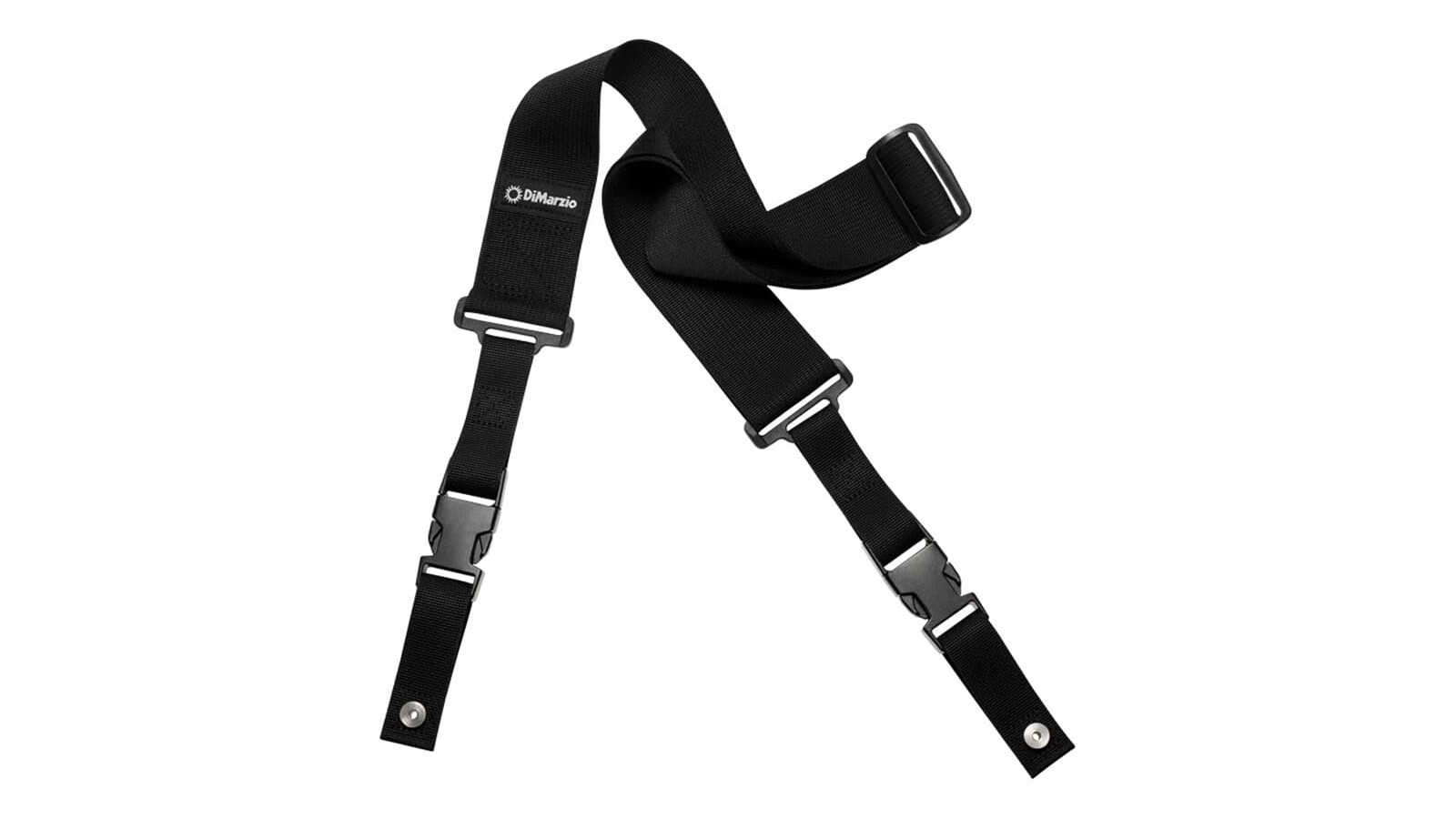
3. DiMarzio ClipLock Strap
Our expert review:
Specifications
Reasons to buy
Reasons to avoid
✅ Buy if you want something secure: With its own strap lock system, the DiMarzio ClipLock makes sure your guitar stays slung no matter what.
❌ Avoid if you want something simple: You'll need to set this strap up on your guitar, so avoid if you prefer the simplicity of a regular strap.
Used by Steve Vai, Andy Timmons, and John Petrucci, the DiMarzio ClipLock is an all-in-one strap and strap lock system. There are a variety of color options to let you match the color of your guitar or stage outfit with this ingenious strap.
The ClipLock strap comes with two brass bushings and some extra long screws to modify your existing strap buttons. This clever system allows you to attach the ClipLocks, which are attached via heavy-duty clips to the strap itself.
Made from the same material as a car seatbelt, you can rest assured that this strap will put up with plenty of abuse. The quick release and attachment system means you can set it up on multiple guitars too, quickly changing from one to another with minimal fuss.
Best high-end
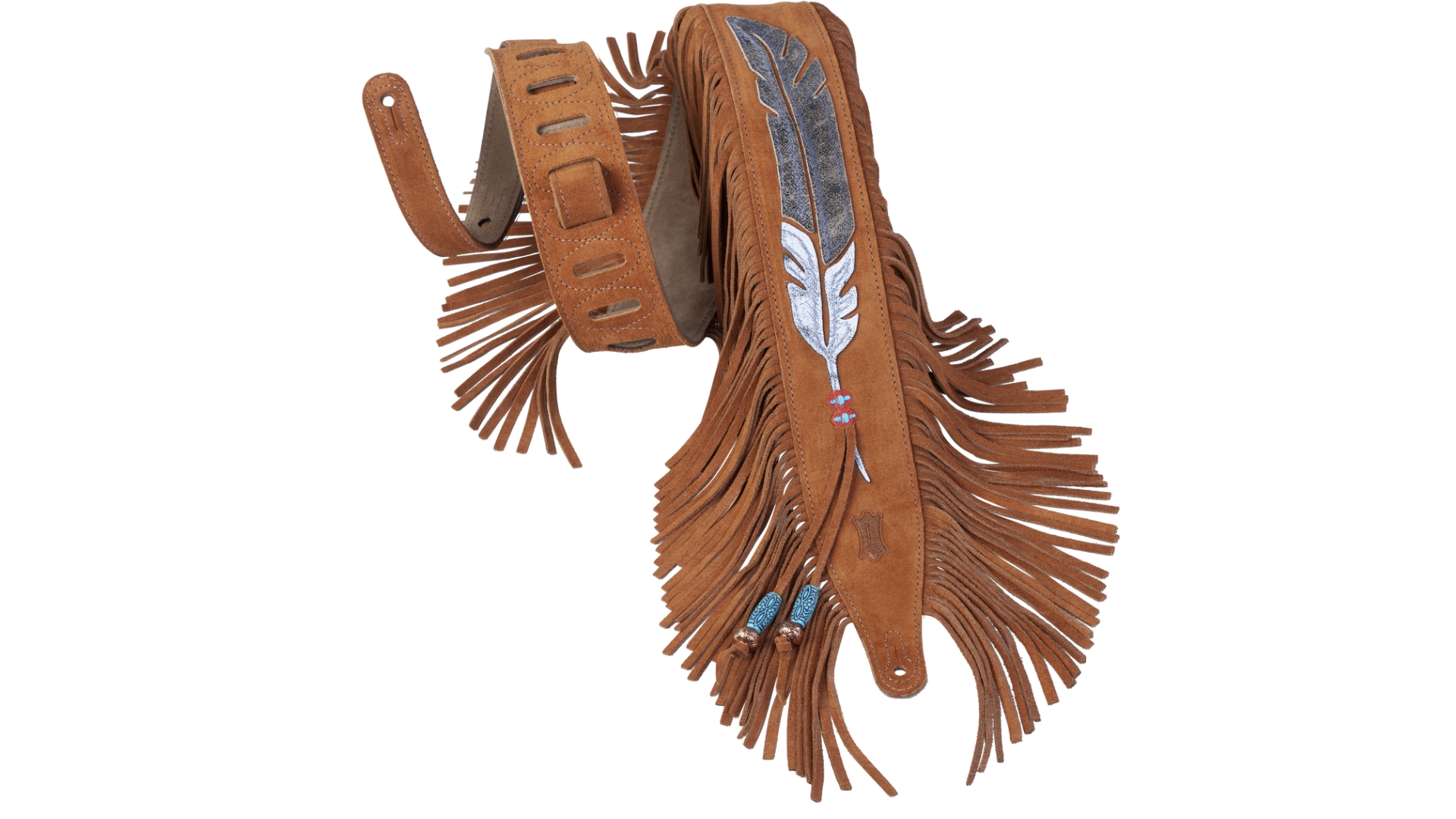
4. Levy's Grand Mesa MS17AIF
Our expert review:
Specifications
Reasons to buy
Reasons to avoid
✅ Buy if you want a premium guitar strap: With its bombastic looks and high-quality materials, this strap is a great option for those who want something way beyond basic.
❌ Avoid if you prefer simplicity: This strap is sure to catch some attention, so avoid if you prefer something that blends into the background.
If you want a strap that's going to stand out, the Levy's MS17AIF is an excellent choice. Part of their Grand Mesa series, it's leather embellishments and frills make it one for those who want to add some style to their guitar.
The quality of this strap is simply fantastic, from the leather applique to the frills that flank the main body of the strap; everything is incredibly well put together. It gives you the feeling that it will last for years and years, which is reassuring as it's not the cheapest strap out there.
The looks are really distinctive though, and it'll complement an acoustic or an electric guitar equally well. It's nice and wide, so it feels great on the shoulder, and has plenty of adjustability, whether you like to wear your strap high or low.
Best acoustic

5. Taylor Element Strap
Our expert review:
Specifications
Reasons to buy
Reasons to avoid
✅ Buy if you want a strap for your acoustic: Coming from Taylor, this is a great strap to pair with the natural looks of an acoustic guitar.
❌ Avoid if you're on a budget: It's up there with the priciest of all the guitar straps, so if you're on a budget, you should look elsewhere.
The Taylor Element Strap is a premium distressed leather construction that’s great for matching the rustic aesthetic of a traditional acoustic guitar. Combining the quality craftsmanship Taylor is renowned for with top-notch materials, this is a guitar strap for those who like things exceptional.
Featuring a multi-layered dark brown coloring, the pre-distressed look gives it an aged aesthetic that’s perfect for matching vintage instruments. The construction is very stiff, so will take a little time to adjust to the contours of your body, but once you’ve broken it in you’ll hardly feel it’s there.
The tapered width makes it nice and comfortable, even when paired with a heavy Les Paul guitar. The balance of comfort and support makes those long playing sessions or shows an absolute breeze.
Best eco-friendly
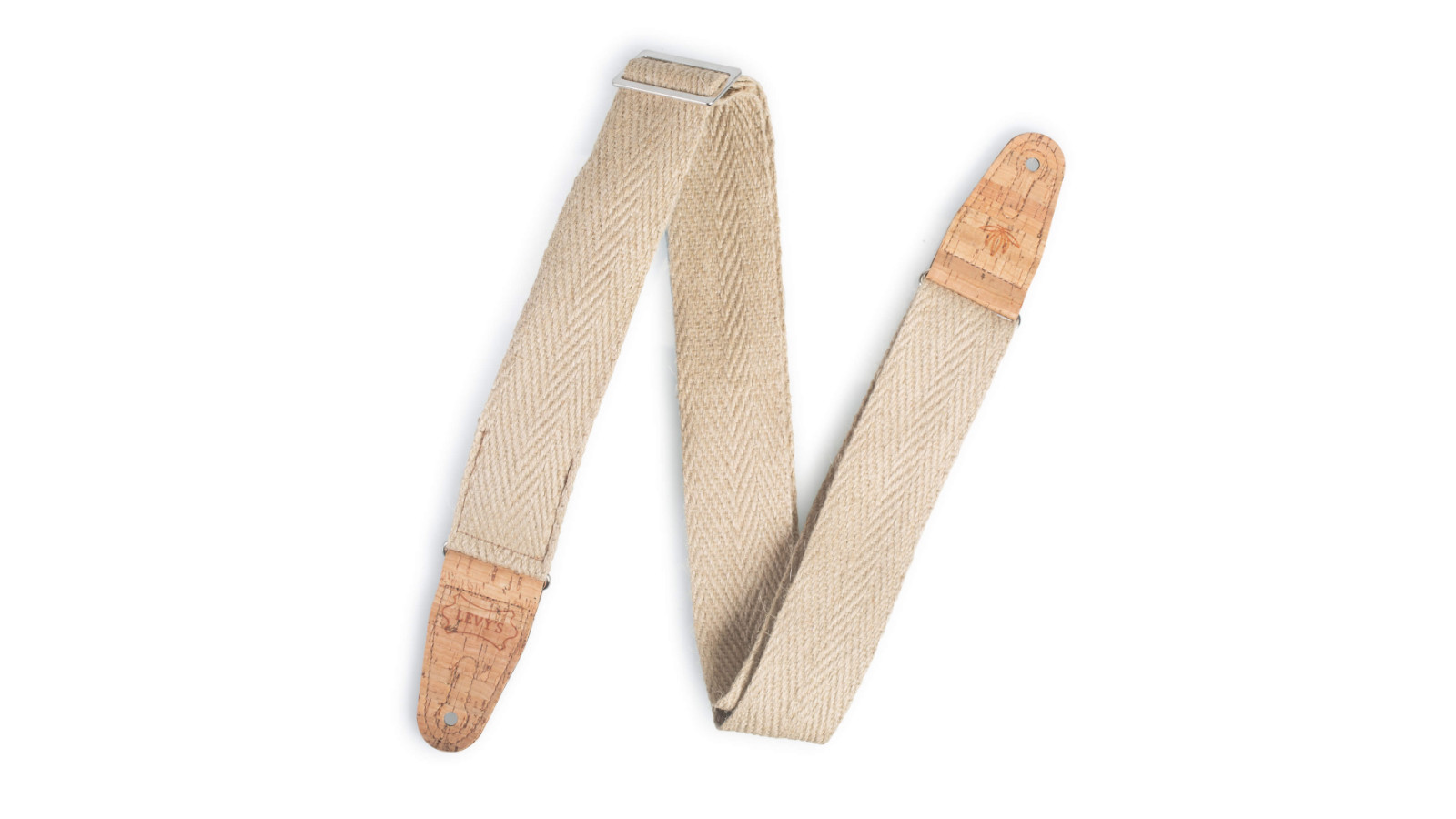
6. Levy’s Hemp Vegan Strap
Our expert review:
Specifications
Reasons to buy
Reasons to avoid
✅ Buy if you're environmentally conscious: Built with eco-friendly materials like hemp and cork, this strap is great if you're not up for using animal-based products.
❌ Avoid if you're gigging regularly: With its light color, this strap will mark up easily, especially if you're regularly playing dingy venues.
If you’re the kind of musician who likes to watch their contribution to the environment, then the Levy’s Hemp Vegan Strap makes for a great choice. Factor in the comfortable width and soft feel of this strap, and you’ve got something that’s more than able to compete with more traditional designs.
This strap is made from Hemp, an environmentally friendly material that grows without pesticides and herbicides and captures carbon dioxide emissions. The ends are made from two-layer natural cork, providing a durable and secure fit to your instrument.
Available in a variety of designs, the natural look and feel of this strap means it pairs really well with acoustic guitars. The silver metal slide allows you to adjust anywhere from 94 to 157cm, making it great for a variety of instruments.
Also consider
The straps I've chosen as my top picks should cover the vast majority of guitar players, but I do appreciate that a strap is quite a personal thing. If you didn't find what you were looking for above, then here are some more great options to look at.
D’Addario Joe Satriani Signature Strap
Nylon | 35-59.5" length | 2" width
The D’Addario Joe Satriani Signature Strap is constructed to Joe’s exact specifications, whilst also featuring an artwork design by the man himself. You don’t have to be a shred fan to enjoy it though, it’s hugely popular with guitarists of all kinds thanks to its ingenious locking system.
★★★★½
PRS Signature Leather Strap
Leather | 45-52" length | 2.75" width
If you’re all about the good life, then the PRS Signature Leather Strap is the one for you. Just like the guitars PRS makes, this strap offers a fantastic look and premium feel. Debossed with a subtle PRS logo, its subtle look means it’ll fit in with a variety of guitars.
★★★★½
Jim Dunlop Jimi Hendrix Festival Strap
Textile | 35-63" length | 2" width
The embroidered design has been painstakingly recreated to exactly match the same one Hendrix wore during that timeless Woodstock performance. It looks fantastic as well as feeling soft and luxurious. The soft underside provides a grippy feel on your clothing too so your instrument won’t move around too much.
★★★★☆
Gibson Lightning Bolt Strap
Nylon | 36-65" length | 2" width
The Gibson Lightning Bolt Strap stands out from the competition thanks to that distinctive lightning bolt that runs down the front. Being a proper Gibson product at a reasonable price doesn’t hurt its standing either!
★★★★☆
Fender Monogrammed Strap
Polyester | 44-52.5" length | 2" width
The Fender Monogrammed Strap is one of the California outfit's most popular offerings, and you might well have seen it adorning many of your favorite guitar players. The excellent design in conjunction with great construction quality, makes this strap one of the best out there.
★★★★☆
How to choose
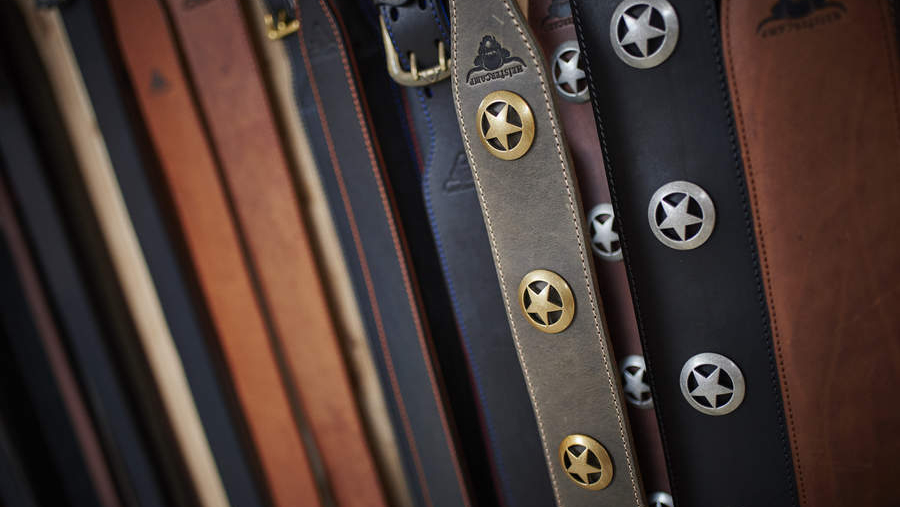
Whether you’re buying your first strap, or have just bought a new guitar and you feel it requires a new strap that better matches its aesthetic, there are several things I always consider when buying a new strap. I’ve made the mistake of buying a strap purely because it is particularly affordable, and whilst affordability should absolutely be a consideration, there are three other things that I think come first.
1. Comfort
You can trust Guitar Player.
If a strap is budget, but it’s not very comfortable, then you might have to replace it with something better, totally undoing the cost-saving. If you know that you need something super-padded, or if you prefer the non-slip qualities that something like a suede strap might provide, make that your first priority.
Don’t assume that all guitars will be comfortable with the same strap, either. While generally one comfortable strap will be suitable for the majority of guitars, some may need different straps, whether that’s because of weight, neck-diving issues, or the guitar being a different type (e.g. electric or acoustic).
2. Style
Straight after comfort comes looks. The strap is one place you can really stamp your personality on your on-stage image, so get something that speaks to you – even if that’s something that other players would turn their noses up at.
Personally, I draw the line at something heavily branded with a different manufacturer’s logo from the guitar, but there’s no law against it, so if you particularly love the look of a Fender strap, why not throw it on your PRS Silver Sky and induce the rage of your guitar-playing audience – music is about making people feel things after all, why not let it be anger?
3. Accessories
Some straps might be super-secure and not need accessories such as strap locks – I’ve generally used straps that are almost frustratingly difficult to get over the strap buttons the first time, but from then on I’ve never been worried about the guitar falling off, so strap locks aren’t a necessity, but not every strap will feel this secure right out of the box or that security may wane over time.
Some straps, on the other hand, may have their own integrated locking system, so you may not need accessories, or you may need some very specific accessories if you plan on moving it between multiple guitars. If you think you will need accessories such as strap locks, it is worth purchasing these at the same time as your strap so you can install everything in one go.
FAQs
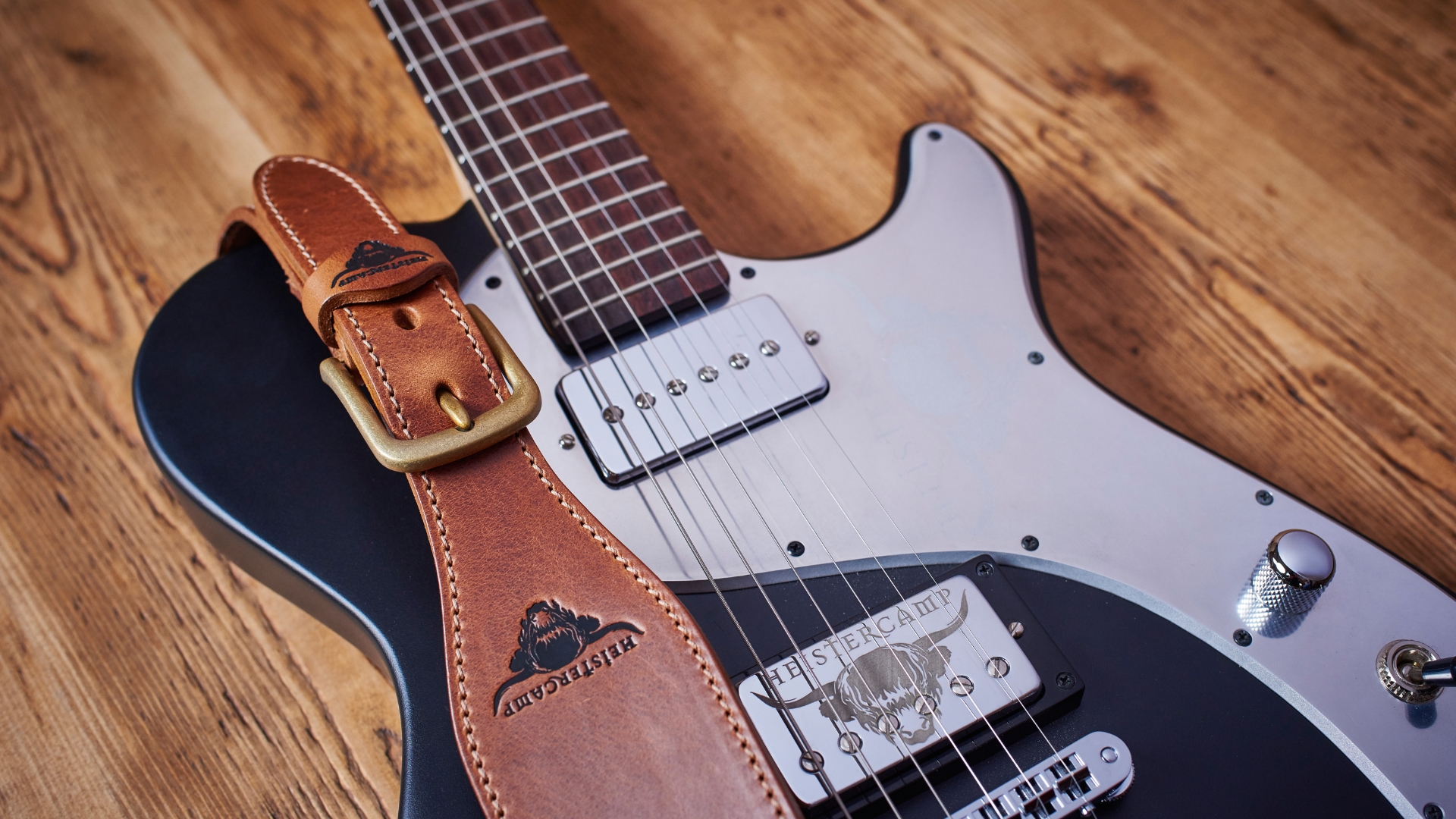
Should I have a guitar strap for each guitar I own?
Some players prefer to have one strap that is supremely comfortable and set to the perfect height for playing. Repeatedly taking a strap on and off will inevitably wear the strap button holes and make them looser, therefore I’ve always preferred having a strap for each guitar and leaving them on at all times – besides, that also means you get to have a unique-looking strap for each one of your guitars that matches their style.
If you are keen on constantly changing your strap to different guitars, I’d recommend getting some high-quality, easy-release strap locks and putting them on all of your guitars so you can swiftly slot the guitar in and out of each.
Should a guitar strap match the guitar?
A guitar strap can look however you like it to look, there’s no real need to match the strap brand to your guitar brand and some of the best strap manufacturers won’t even make guitars, so you couldn’t match them even if you wanted to. So no, there is no need to match the two. All that being said, you may receive some disapproving looks if you wear a Gibson Strap with your Fender guitar.
How high/low should I wear my strap?
The height you wear your guitar is totally up to you. As long as it’s comfortable and you can get your hands to wherever they need to be on the neck and when you’re strumming, then there is no right or wrong. I’ve always gone for positioning my strap a little higher than most people – though The Beatles would firmly approve – as I find that gives me a feeling of security and control over my guitar, particularly when moving around the stage.
Punk music fans might prefer to wear their instruments lower, which lends itself to the player having a little more presence in their stance. If you’re new to guitar, the best place to start is right in the middle, giving you plenty of room to move your strumming arm up and down naturally, while also leaving your fretting hand at a comfortable height. Any of the best straps will allow you to quickly adjust the height, so if you’re keen to try out a different height, you can easily alter it back if it’s not working.
Which end of a guitar strap goes where?
While technically there isn’t a wrong way round for a strap to be attached, the vast majority of players prefer the buckle that adjusts the length of the strap to be at the back when you have it on, which means attaching the end closest to this to the base of the guitar.
On some straps it will be very clear which way it goes, due to any printing or graphics – if you have ‘Fender’ written on your strap and it’s upside down, you’re likely to want to swap it over.
Are guitar straps universal?
Guitar straps are generally one-size-fits-all, so any strap should generally fit your guitar. This is due to strap buttons being similar sizes – we wouldn’t go as far as saying they are standardized, but they’re pretty close and they’re also easy to swap in/out.
The only instance I’ve found where a strap doesn’t immediately fit is on a classic acoustic guitar, which lacked a strap button on the base of the guitar and required some string to tie the strap to the bottom of the headstock beneath where the strings go from the nut to the machine heads.
It’s not uncommon for classical guitars to not have strap buttons at all and there are some smart solutions to get around this, with specialized straps that clip onto the guitar instead often used.
Why does my guitar strap keep falling off?
If your guitar strap won’t stay on, it may be that your guitar is a little on the heavier side, or over time the holes that the strap buttons go through have become wider and are no longer secure. This doesn’t mean that your days of using that strap is over though, you can add some strap locks to your guitar, which will safely secure it in place, though you may have to replace your strap buttons to do this (don’t worry – it’s super simple).
Key terms
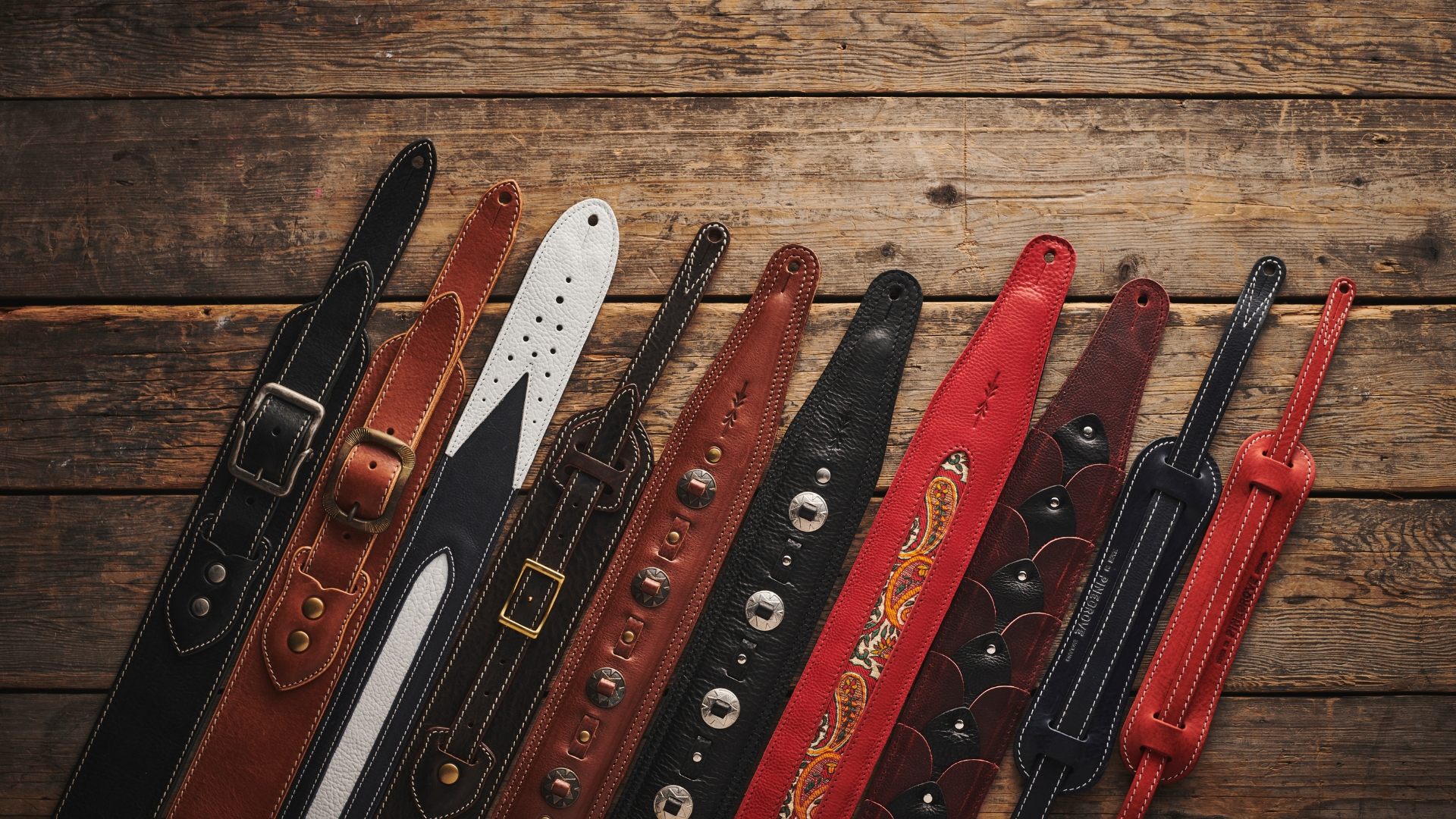
- Adjuster (slider): The adjuster, sometimes called a slider, on a guitar strap is a component used to adjust the length of the strap via sliding it up and down and feeding the strap through.
- Buckle: A hardware component that is part of the adjuster in a strap that secures the strap in place.
- Grommets: A small ring-shaped device that fits over your strap buttons, often made of plastic or rubber, that helps ensure the strap doesn’t slip off the buttons.
- Jacquard: A woven patterned design. It can be intricate and often has a vintage style and bright colors.
- Neck dive: The occurrence of your guitar’s neck drooping towards the ground when hanging by your strap due to a weight imbalance.
- Padding: Any additional material used in the strap construction to improve the comfort of the strap, particularly around the shoulder area where the strap rests.
- Seatbelt strap: A seatbelt strap is made from the same, durable material that seatbelts are made from in the automotive industry.
- Strap button/pin: The metal studs at the base of your guitar and somewhere near the neck or upper horn of your guitar - they will be in different places depending on your specific model.
- Strap lock: A device to ensure that your strap doesn’t fall off of the strap buttons. Often simple metal or plastic plates that are wider than the holes of your straps so they cannot fall off.
- Washer: Usually made of felt or rubber, the washer is placed between the strap button and the guitar's body to avoid damage to the guitar’s finish from friction caused by the strap moving.
How we test
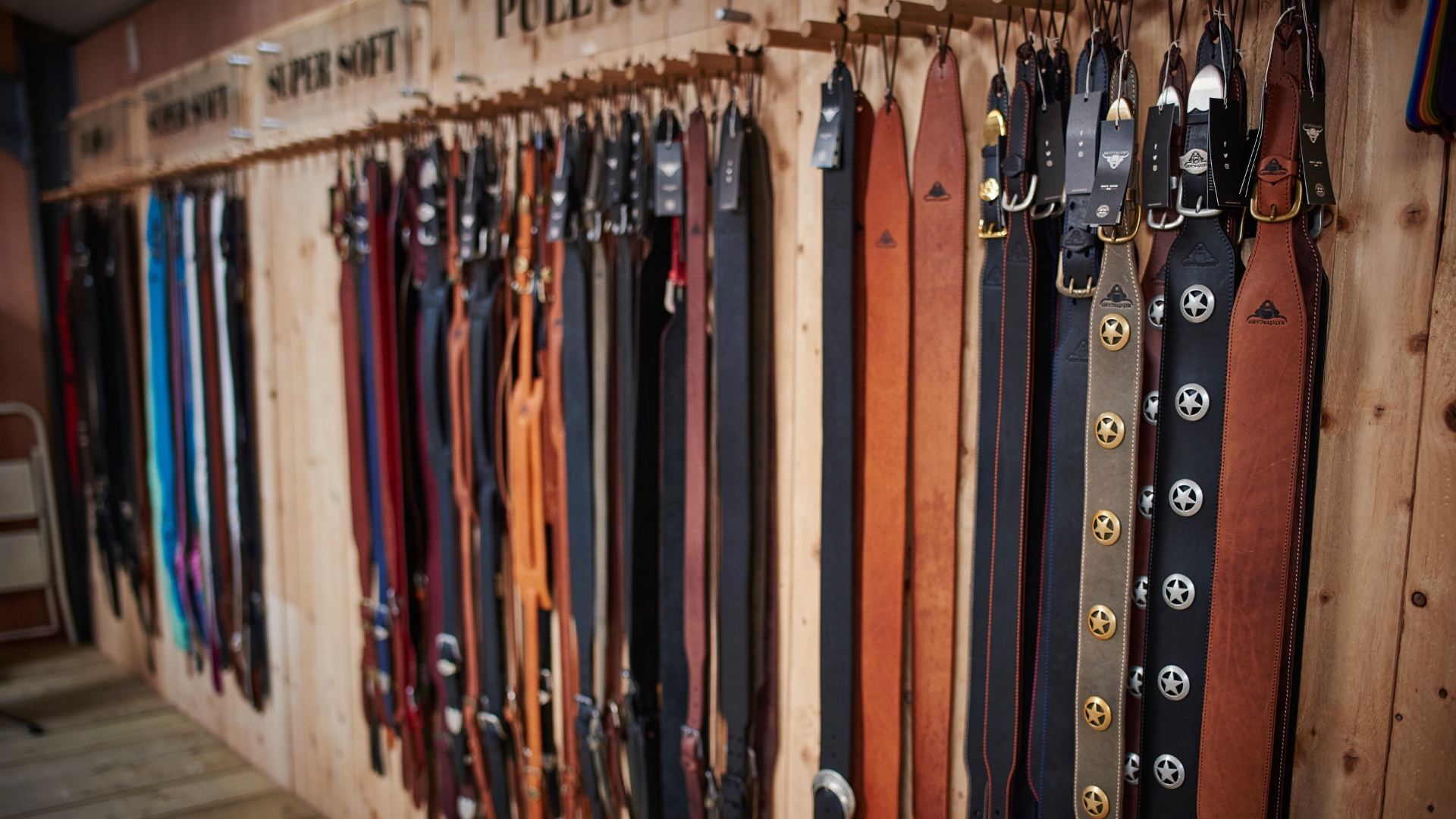
Here at Guitar Player, we've been testing gear for nearly 60 years, so it's safe to say we know a thing or two about guitar straps. Having slung more straps than we'd care to remember, we're well aware of the necessities requires for a strap to put up with wear and tear on the road, as well as being flexible enough to use across multiple instruments.
When looking at a guitar strap, there are three key factors we look at to determine its suitability. The first of those is the width of the strap. The width accounts for the comfort of the strap far more than any material, so we look for at least a 2-inch width, and ideally more in a good guitar strap.
Next we consider the length of the strap. Is it adjustable enough that it will fit a variety of guitarists? We want a strap to be flexible enough to fit any guitar player whether they're over six feet or below five feet tall. This variety of length also ensures that players can wear their strap where they want, whether its slung low like Slash or up high like Tom Morello.
Finally, we'll look at the materal. There are various materials used in the construction of guitar straps from man-made textiles like polypropylene, to animal products like leather and suede, or even plant-based produce like hemp. The material has some effect on the usability, like leather often grips to your shirt which can be useful if you have a guitar that likes to neck dive.
For the most part though it's a build quality issue. We want to see that any strap we recommend is well put together and likely to stand up to wear and tear. After all, the last thing you want is for a part of the strap to fail and cause your guitar to come crashing down to the ground.
Read more on how we test gear and services at Guitar Player.
Related buyer's guides
- Best guitar stands and hangers to your guitars safe and secure
- Freshen up your tone with the best electric guitar strings
- Plug in with one of the best guitar cables
- Take a look at the best bass guitars under $500
- Save some cash with the best acoustic guitars under $500
All the latest guitar news, interviews, lessons, reviews, deals and more, direct to your inbox!

Matt is a Junior Deals Writer here at Guitar Player. He regularly tests and reviews music gear with a focus on guitars, amps, pedals, modelers, and pretty much anything else guitar-related. Matt worked in music retail for 5 years at Dawsons Music and Northwest Guitars and has written for many music sites including MusicRadar, Guitar World, Guitar.com, Ultimate Guitar, and Thomann’s t.blog. A regularly gigging guitarist with over 20 years of experience playing live, writing, and recording in bands, he's performed everything from jazz to djent, gigging all over the UK in more dingy venues than you can shake a drop-tuned guitar at.
